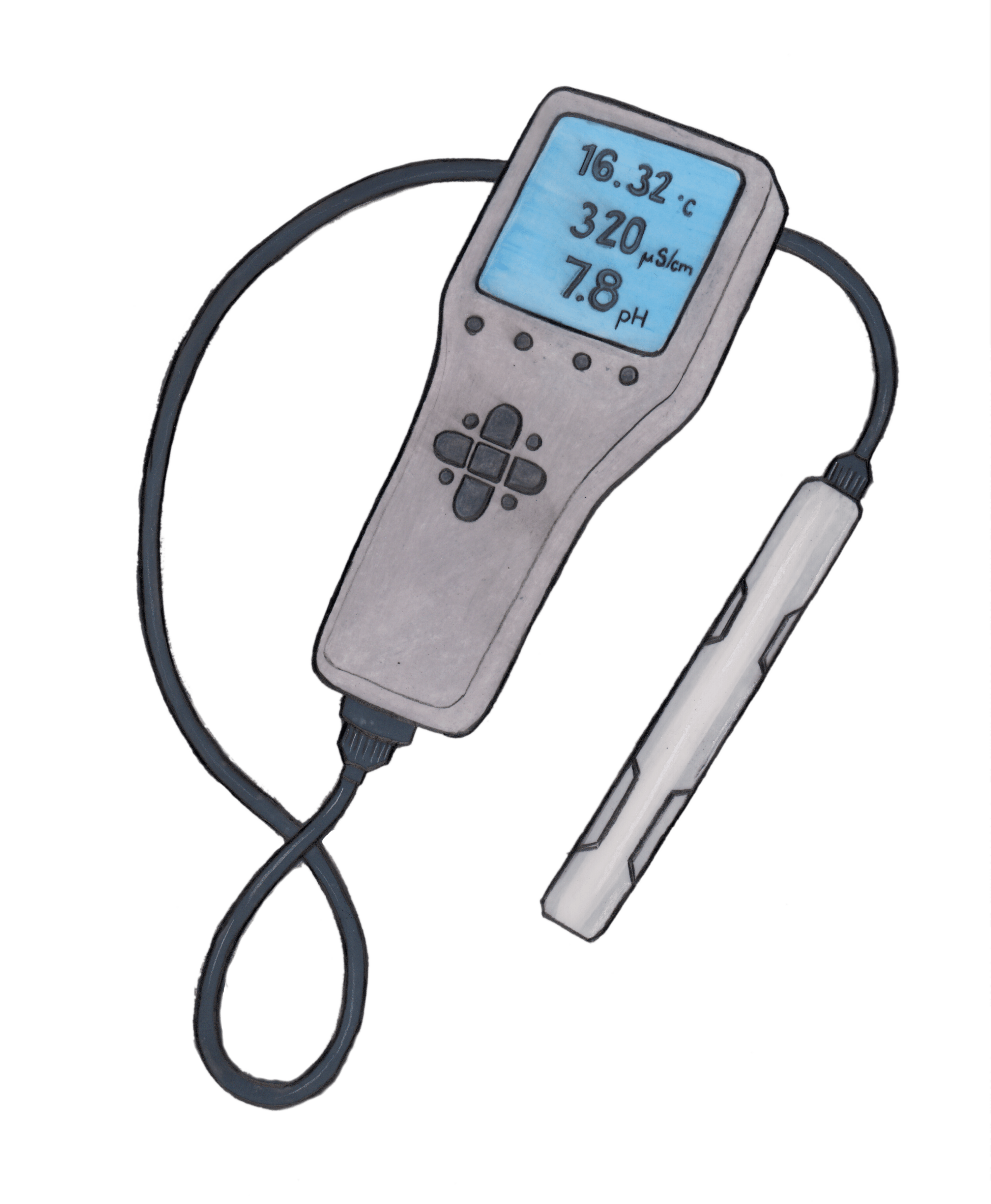Conductivity in lakes and streams generally ranges between 0 to 200 µS/cm, while in major rivers conductivity may be as high as 1000 µS/cm. Very high conductivity (1000-10,000 µS/cm) is an indicator of saline (salty) conditions.
What is it?
Conductivity measures how easily electricity flows through water. Just like metal, water can conduct (transport) electricity. This is because there are salts dissolved in the water. If you have pure water with no salts, conductivity will be zero.
The salts in rivers and lakes come from rocks that get broken down over time. The types of rock and soil in an area will influence the conductivity of the water. Rocks that break down more easily will raise conductivity.
Seasonal factors
Conductivity often fluctuates seasonally. As water gets warmer, conductivity goes up. Additionally, if lakes do not receive enough rain or stream water, conductivity increases. This is because evaporation takes water away but does not take salts away.
When ice forms on a lake in winter, the water below may also become saltier because salts are not incorporated into the ice. When the snow and ice melts in the spring, conductivity usually goes down because the meltwater dilutes the concentration of salts.
Why does it matter?

Conductivity is an indirect measure of the saltiness of the water. Fish and bugs that live in freshwater cannot tolerate large increases in saltiness because they are not adapted to saline (salty) water, like marine fish are.
Each lake and stream tends to have a relatively constant range of conductivity. This can be valuable information to have as a baseline for comparison. Significant changes in conductivity outside normal seasonal ranges could indicate a source of pollution.
For example, sewage entering the water would raise conductivity whereas an oil spill may lower conductivity. In urban areas, winter road salt can be a major source of increased salts in the water, especially during spring melt.
How is it measured?
Conductivity is best measured directly in the lake or river using a probe with a conductivity sensor. Conductivity is typically measured in microsiemens per centimeter (µS/cm). It can also be measured as specific conductivity – a standardized measure that shows what the conductivity value would be at 25°C.

Related to conductivity: total dissolved solids (TDS) and, to a lesser extent, hardness.
Conductivity is influenced by: concentrations of dissolved ions (salts), water temperature.